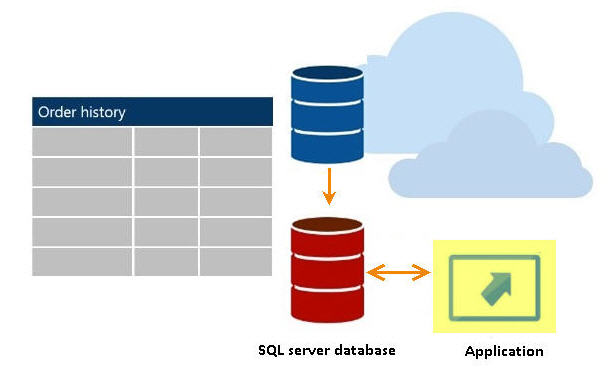Exciting new features of SQL server 2016
- Polybase
Storing mammoth volumes of data is an area that has been dominated (well, almost) by Hadoop in the recent past. And with perks like scalability and cost-effectiveness, it seems right actually. Keeping the kind of market it captured, Microsoft had introduced Polybase in SQL Server 2014 which was meant to be a connector between Hadoop and Analytics Platform System (Microsoft’s data warehouse appliance). In SQL Server 2016 this feature in being incorporated full-fledged into the on-premise product with the aim that it will assist you in processing large amounts of bulky text files. Regardless of whether such files are stored in Azure Blob Storage or Hadoop, you’ll be able to query them as if they were database tables.
- Row level security
Row level security applies another layer of constraints on rows within tables. It basically restricts what data within a table can be viewed by which users through a function. This feature though lacked in earlier SQL Server versions will be introduced in the 2016 version. It will help you to limit views of the data based on customer ID; this feature will prove to be a boon for multi-tenant environments.
.jpg)
- Query Store
Changes to the query optimizer that occur from version to version often adversely impact the server’s performance. Identifying and resolving this issue has traditionally been quite hard to achieve, that too with extensive testing. In SQL server 2016, the Query Store feature seeks to help out in the area by quickly identifying which queries have recently slowed down through the maintenance of a history of query execution plans with their performance data. Configured at the individual base level, this feature allows users to force the use of an older, better plan if needed.
- Stretch Database
Procuring additional external storage can often be pricy. But with the Stretch Database feature, Microsoft is all set to make sure that your SQL server database is one area that won’t need additional high-cost storage. Under this feature some part of your tables will be securely moved into an Azure SQL Database on the cloud. The query optimizer being aware of the location of tables on the server and Azure will divide the workload accordingly. Since you’ll only be charged for the SQL Database in Azure when it is used for queries, this plan will in effect be more reasonable than enterprise storage.

- Encryption
Data encryption is just a way to protect data that is worth millions. SQL server has been the database of choice owing to the extensive use of encryption (column-level, rest and in transit) for quite some time. But since these had to configured independently, there were often quite a few mistakes made. With the “Always Encrypted” feature, an enhanced client library will be used to encrypt the data at all times, even when it is alive in the database.
- JSON Support
A happy news for JSON enthusiasts is that, SQL Server 2016 in addition to adding support for direct Hadoop querying is extending support for JSON providing the ability to quickly move JSON data into tables.
- In-Memory Enhancements
SQL Server 2016 will be bringing in a welcome improvement to the concept of in-memory tables introduced in SQL Server 2014. It will now support check constraints, foreign keys, unique constraints and parallelism. Supported table size has also been upped from 256 GB to 2TB. Plus, column store indexes (used in data warehouse workloads) that were introduced in 2012 have also been enhanced. SQL Server 2016 will bring enhancements with improved support (Always On Availability Groups) and sorting.
Get ready for SQL database recovery 2016
The launch of SQL Server 2016 will see a barrage of supporting applications and tools designed for this latest database version. An application sector to watch out will be SQL database recovery 2016. While there are already many recovery tools available that work marvelously with the currently prevalent versions, 2016 will bring new flavors to them too.
Wrapping it up
SQL Server 2016 will prove to be every bit as resourceful as the earlier versions of the database. While many promises are made before its release, what remains to be seen is if the actual product will live up to the expectations it has created.
Reference: http://www.stellarinfo.com/blog/sql-server-2016-database-recovery/




